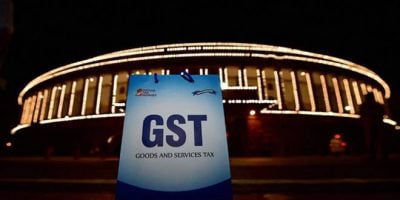When defaulter-on-the-run Vijay Mallya offered to pay Rs 4,000 crore to a consortium of 17 banks as a one-time settlement for his Rs 9,000-crore outstanding loan, the bankers approached the Centre for assistance. But the government, which happens to be the owner of the public sector banks, threw the ball back to their court saying it was “a purely commercial decision of the banks”.
The banks were left stranded as they neither had sufficient collaterals to recover the loan amount, nor did they have an answer to Mallya’s offer in the absence of a ‘loan haircut’ model. Soon, they rejected the offer, possibly fearing the wrath of investigating agencies, including the Central Vigilance Commission (CVC).
Many believe that Mallya’s offer for a one-time settlement has set the ball rolling for working out a mechanism for commercially prudent loan settlements for PSBs. Private banks, as well as non-bank finance companies (NBFCs), are known for taking haircuts and moving on. In fact, this has also been a global practice. The only difference with international companies is their large dependence on unsecured loans as the corporate bond market is well developed for companies to access. However, corporate India is heavily dependent on bank-funding, which increases the risk not only for banks, but also for the financial system as a whole. Since structurally, the banking system in India is dominated by PSBs, it becomes all the more important to iron out any issues that come in the way of banks in supporting India’s economic growth.
That’s where the government has stepped in to make it easier for banks to take a haircut in stressed loans or one-time settlement in defaulted cases. Last week, Finance Minister Arun Jaitley cleared a proposal for constituting an external committee with representatives from banks, the finance ministry and the RBI. While the Indian Banks Association (IBA) will come up with a plan of action, the objective is to allow banks to move the committee with a ‘haircut’ proposal. “This would save the banks from any enquiries for lapses or vested interest in future,” says a consultant.
Experts say the proposed committee will have to deal primarily with two types of cases – one, that would be along the lines of a default by Mallya’s Kingfisher, where the promoter is willing to go for a one-time settlement but for a reduced amount; and, two, stressed cases (not necessarily NPAs) where the bank agrees to waive off penal interest or interest outstanding, or a portion of the principal amount, or a combination of all three. “There can’t be a fixed percentage for loan haircuts. The waiver will be based on a case-to-case basis,” says Kalpesh Mehta, Partner, Deloitte Haskins and Sells.

‘Loan haircuts’ are actually not new to PSBs. They have often been at the receiving end of government policies. The recent Uday Bond scheme for state electricity boards (SEBs) is a classic example where banks were almost forced to convert their high interest-bearing loans into low-yielding bonds. Similarly, there are instances of banks giving in to promoters, especially in cases where they had to convert a part of the debt into equity at higher valuations. The equity as an instrument does not have any obligation to pay. In the Kingfisher case, for example, PSBs converted a part of the loan into equity at a premium. The share price later crashed to single-digit and has now been suspended from trading.
But then what’s all this noise for a haircut? Surprisingly, the timing of the haircut looks suspect to many private bankers. They feel that closure of the corporate debt restructuring (CDR) window and the consequent clampdown by the RBI on banks to make higher provisions for restructured assets has put the PSBs in a tight spot. Many banks have been clocking losses quarter after quarter, and only four quarters are left for the March 2017 deadline for RBI to clean up the banks’ books. The ‘haircut’ mechanism will help the banks positively (see Advantage Banks). “The new proposed committee for haircut is just another form of CDR,” warns a banker. Abizer Diwanji, Head, Financial Services, EY India, says the objective of creating a new mechanism is still on financial engineering. “The focus on operating revival is still not there,” he adds.
Private bankers say the whole system of asset reconstruction companies (ARCs) goes for a toss if the committee decides to give more leeway to promoters. “Every entity will be eligible for some kind of a haircut in a challenging economic environment. These waivers should be backed by a strong recovery plan,” says Diwanji. Therefore, PSBs must focus on better governance, stronger credit standards and a forward-looking workforce. If these issues are not resolved, there will be no end to their woes.
There are also fears of a compromise settlement decision shifting from banks to the political class as finance ministry officials will have a say in the loan haircut committee. Influential promoters could push for favourable one-time settlements or waivers. In fact, the committee would provide legitimacy to many such deals under the garb of transparency.


